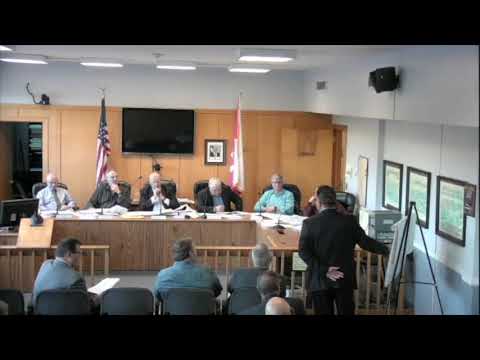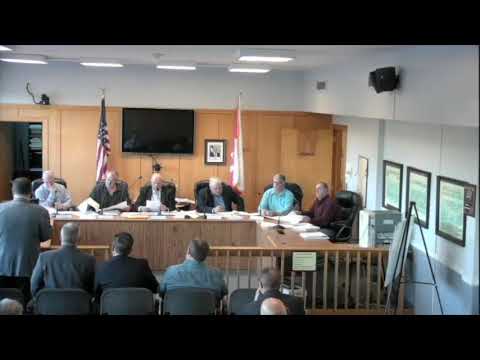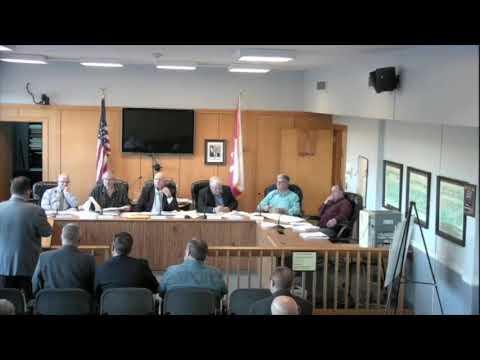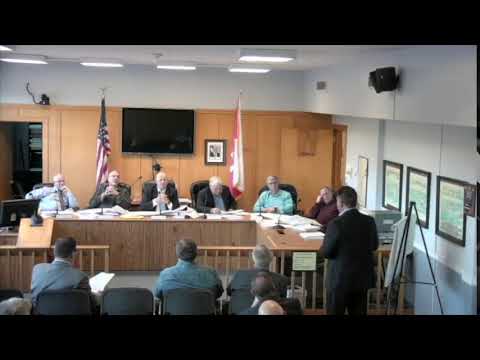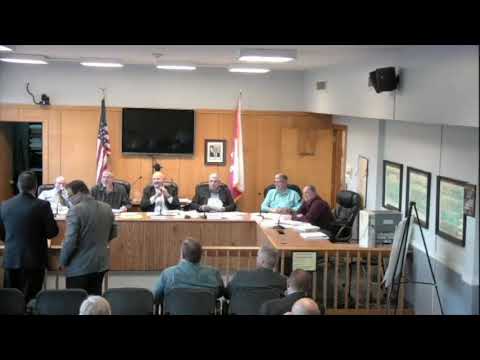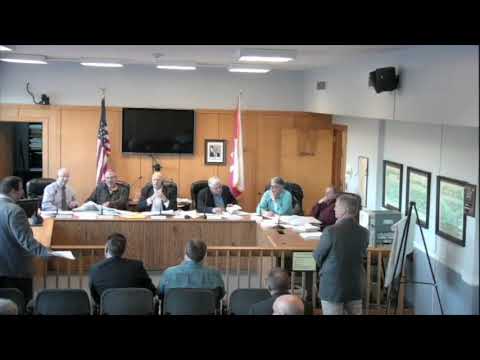RI leaders are falling for the perpetual motion machine scam
“Though proposals to build machines which violate physical laws is not new, in a modern context this phenomenon is found to be stimulated by competitive financial rewards. The situation presents a high risk to investors and has the potential to adversely impact on societal transitions to a more sustainable future.”
February 22, 2021, 4:10 pm
By Uprise RI Staff
The proposed MedRecycler pyrolysis facility to be located on the West Warwick/East Greenwich line is billed as a machine that turns medical waste into useful energy. But the plant can’t violate the second law of thermodynamics, no matter how hard state leaders like House Speaker Joseph Shekarchi or General Treasurer Seth Magaziner pretend it will.
Every part of the pyrolysis process is an energy consuming technology. MedRecycler CEO Nicholas Campanella explained the process to the West Warwick Planning Board at a meeting held on May 6, 2019. As you will see, energy, and a lot of it, is consumed at every step.
- Trucks from all over New England deliver 75 tons of medical waste to the West Warwick/East Greenwich facility every day.
- The waste is loaded onto conveyors.
- The conveyors deliver the waste to two different macerators, which are grinding systems that pulverize the waste.
- From the macerators the waste goes into a “refractor,” then to a dryer, that “takes out all the moisture completely.”
- The waste then goes into the pyrolysis system. The pyrolysis system is started by using natural gas. The outer wall of the pyrolysis chamber is heated to 800 degrees, which heats up the waste inside and turns it to ash and synfuel, as well as gases such as NOx, CO and CO2.
- “There is no open flame, nothing burning, no combustion inside the facility,” Campanella told the Planning Board. (italics mine)
- Once the syngas leaves the pyrolysis chamber it goes into “gas cleanup” a filtration system which cleans the gas of impurities. What is filtered out of the syngas is more dangerous chemicals, heavy metals, and dangerous cancer causing compounds.
- The gas goes into a thermal re-ox, and then it goes into containers outside the facility, where the generators are located.
- The generators and the pyrolysis system will run off the newly created syngas.
- Remember when Campanella said there’s no combustion inside the facility? That’s technically true-ish, because the generators are just outside the facility, where the syngas will be burned to create energy.
- The pyrolysis facility is in fact burning medical waste for fuel, it’s just being done in a two-stage process to make it look like they are not.
- The generators located just outside the facility will generate about 1.4 megawatts of electricity, of which 300kw will be used to run the facility. The rest will be sold.
“We start the system running with natural gas,” said Campanella. “Once the system is running, it’s a self-contained unit. It just runs continuously.”
As you may now understand, the energy used at every level of this process cannot possibly produce more energy than was used in the energy’s creation. This process can’t create enough synfuel to power the process to create additional synfuel. A scientific paper entitled ‘Patented blunderings’, efficiency awareness, and self-sustainability claims in the pyrolysis energy from waste sector, by Andrew Neil Rollinsona and Jumoke Mojisola Oladejob “…shows that a pyrolysis plant for self-sustaining Energy from Waste is thermodynamically unproven, practically implausible, and environmentally unsound.”
In the paper, “A linkage between widespread commercial failures and a lack of focus on thermodynamic fundamentals is also identified, along with an environment of indifference or ignorance towards energy balances and sustainability when these technologies are presented, assessed and financed. Though proposals to build machines which violate physical laws [are] not new, in a modern context this phenomenon is found to be stimulated by competitive financial rewards. The situation presents a high risk to investors and has the potential to adversely impact… societal transitions to a more sustainable future.”
One of those investors? Rhode Island taxpayers.
The idea that financial rewards and an “indifference or ignorance towards energy balances and sustainability when these technologies are presented, assessed and financed” was evident when House Speaker Joseph Shekarchi, who acted as the lawyer for MedRecycle before the West Warwick Planning Board, said about the pyrolysis facility, “It’s a green project” that “we think it helps the environment in general.”
Campanella, wrapping up his explanation of how natural gas will be used only at the start of the process, averred that the project “is strictly clean and green,” adding, “and that’s the new technology that’s out there without the… you know…” Actually, I don’t know where he was going there.
What happens with all the ash?
When a member of the West Warwick Planning Board asked, “What happens with all the ash?” Campanella explained:
“The ash residue that’s left over, it’s usually about ten percent. Basically we have about ten percent of the residue that’s left over. What we do is put it into a container, and we sell it to either asphalt companies or concrete companies and they use it in their mix. So we repurpose almost 100 percent of everything we bring in and we dispose of.”
Putting aside what kind of contaminants might be present in this ash, char, slag or dust, Campanella’s claim that about ten percent of the proposed 75 tons of medical waste a day that he projects will come into the system is a very different number from that in the application MedRecycler sent to Commerce Rhode Island when he was seeking bonds, guaranteed by the taxpayers, to help fund his project.
In the application MedRecycle said five tons per day will be sold to concrete companies for mix, but ten percent of 75 tons is 7.5 tons of solid waste, a significant difference.

But let’s back up. We shouldn’t so cavalierly put aside the potential contaminants in this 7.5 tons of concrete fill per day. Have we forgotten the fill the Rhode Island Department of Transportation nearly allowed to be used during the 6/10 construction project? Do we really want our cement, which could be used in a variety of public uses, to be potentially contaminated with medical waste byproducts produced by via pyrolysis?
Green energy is that which comes from natural sources, such as the sun. Clean energy are those types which do not release pollutants into the air, and renewable energy comes from sources that are constantly being replenished, such as hydropower, wind power or solar energy.
By these definitions, medical waste to energy via pyrolysis is not green, clean or renewable. Instead, it’s a boondoggle, and once again Rhode Island leaders, like Speaker Shekarchi and General Treasurer Seth Magaziner, who voted as the chair of the Rhode Island Industrial Facilities Corporation (RIIFC) Board to approve millions in bonds for the MedRecycler facility, despite the easy to find science that shows these facilities are not green, not feasible, and are simply a modern take on an age old scam: the perpetual motion machine.
The meeting of the RIIFC board was not recorded. It is not known what exactly CEO Campanella told the board, but the members were apparently impressed enough to unanimously vote to approve millions in taxpayer backed bonds for the project. These bonds are now being marketed by MedRecycler as reasons to invest in the failing company.

Here’s the full video of the West Warwick Planning Board discussing and approving the MedRecycle facility.
After this story went to press, I received a reply from Brian Hodge at CommerceRI:
“The state is a conduit issuer through the RI Industrial Facilities Corporation. The state has no funding in the project. The bond, still pending approval, would be a tax-exempt bond for a private activity (solid waste disposal facility), and not a moral obligation bond. Commerce RI did not approve the bonds.
“RI Industrial Facilities Corporation provided an initial approval for this bond issuance, and is still pending final approval. Final approval is subject to the company obtaining approval from the Public Finance Management Board, Department of Environmental Management, the Town of West Warwick, and State-Wide Planning.“
Previous reports on the pyrolysis facility:
- Is turning waste plastic into fuel the answer to our waste management and energy woes?
- Senator Valverde and Rep Caldwell oppose medical waste burning proposal on East Greenwich line
- Representative Serpa opposes medical waste to fuel pyrolysis facility
- RI leaders are falling for the perpetual motion machine scam
- ecoRI: Proposed Medical Waste Facility has Neighbors on Edge
- ecoRI: DEM Issues Conditional Permit to West Warwick Medical-Waste-to-Energy Facility
- EGNews: Town Appeals Permit for West Warwick Medical Waste Plant




